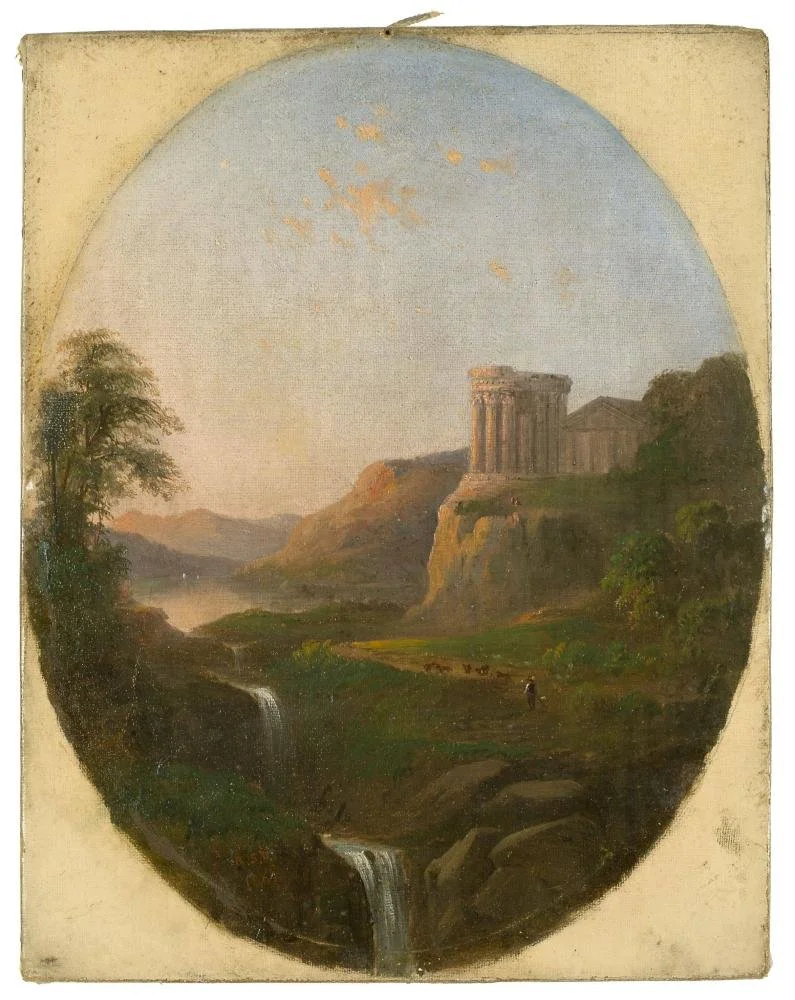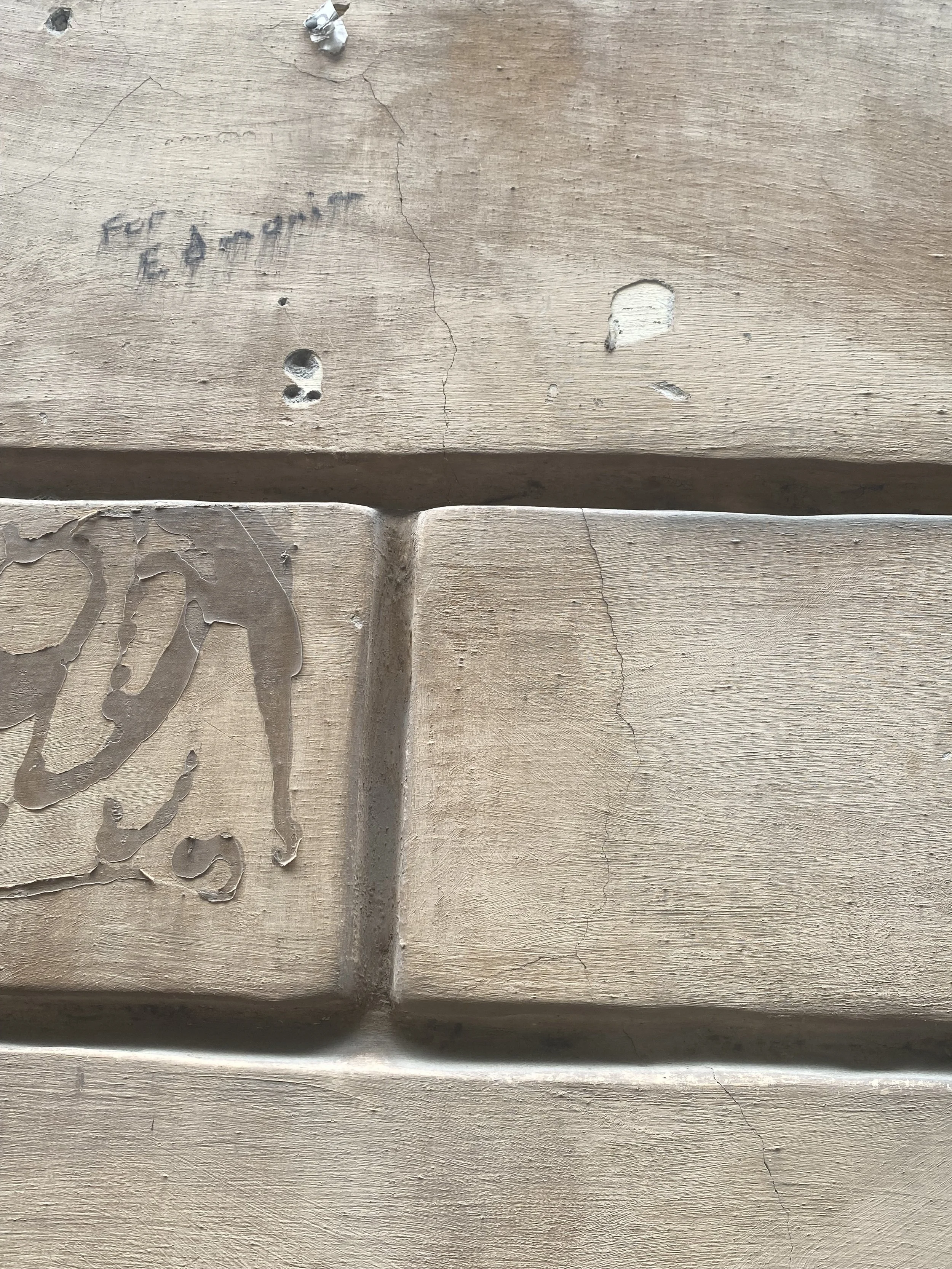Walking History
Graffito “For Edmonia” found on via Gregoriana, May 15. 2023. Thanks to Elka Stevens and Akili Tommasina for pointing this out
The other day I spent a morning walking around the Piazza del Popolo and Piazza Spagna. There is no marker or plaque, no statue or sign that tells us who lived and wandered down these streets. On the Pincian Hill I looked over beyond the obelisk to the dome of San Pietro: this was where Frederick Douglass stood when he visited Roma, and described having one of the best views of the Eternal City. Douglass was also fascinated by the obelisk that stands in the center of the piazza and the others you can find in Rome.
From the Pincian Hill I walked towards Villa Medici - the French Academy - where in the 18th century two Black Caribbean artists attended, and during the 19th century many other artists attended for lessons. Perhaps even Robert Duncanson. Continuing straight, I arrived at the Spanish Steps - here artists met vendors and market sellers some of whom they might have hired on the spot as models for their paintings. Nathaniel Hawthorne and Henry James describe this area as a center of artistic encounter, and a center for Rome’s international communities. Artists, tourists, visitors converged here. Now the stairs bloom with pinks and reds and greens: they are pretty but no longer a place to sit and observe, now they are more like an ornamental thoroughfare. I walked past the stairs with my friend, the artist Elka Stevens, and headed down Via Gregoriana - a street on which several illustrious residents once had homes, including the Herziana family (now the bibliotheca Herziana) and Charlotte Cushman and her friend Sallie Mercer, an African American woman from Philadelphia who was Cushman’s close friend and confidante. Here too, Edmonia Lewis had rooms - at least for a time. Next to #7, a graffito in black marker read “for edmonia” - a tiny marker that you’d miss if you weren’t walking slowly. As tiny as it is, these two words written along the wall are powerful symbols, that animate the concrete layers and disappear them altogether. These are words that take us back to another time and space, providing an opportunity to imagine who once walked these streets.
Around the corner from via Gregoriana is the Palazzo di Propaganda Fide; here you might have found students from across the world studying to become missionaries. Students from the African continent, from South Asia and South America. Upstairs Borromini constructed the chapel of the Magi Kings - “Oratorio dei Re Magi” - and above the altar is a painting of the Three Magi that includes a Black king, giving us a sense of the visual and racial frameworks through which Black US artists might have been understood. But given the significance of this area for artists and travelers, I wonder whether Robert Duncanson, Eugene Warburg, David Dorr, Edmonia Lewis and Frederick Douglass ever visited this chapel during their walks through Piazza Spagna? Did they meet with seminarians from these different parts of the world? Piazza Spagna remains cosmopolitan: the fashion houses that line the square materialize the global threads of trade, production and consumption that bind us; their glass fronted facades invite us to peer inside, mirroring our desire (as the artist Alex Da Corte has described), and also mirroring the glass screens that mediate tourists’ view of the square, tourists who travel from across the globe, who converge, and whose images then re-emerge and conglomerate into reworked images of the Piazza on their social media platforms.
But perhaps in these screen-based images, there is the possibility of revisiting the piazza’s other history of migratory encounters. A few hundred meters away is via Marguta, a street that was one of those sites of migratory encounter. It’s narrow and spills out into the square, almost under the shadow of the Villa Medici. It was lined with artist studios, and 19th century guide books direct travelers there immediately. Here people would sit for their portraits, they would commission Italianate landscapes, they would take home small sculptures. Although the street is like a sliver - and now lined with glass fronted commercial galleries - it was once a place of convergence, a place to be seen, a street in which the production of images - although not necessarily through glass - mediated one’s experience of space, and one’s relationship to self. Here too a global trade in materials, their production and consumption connected multitudes.
Around the corner on Via Alibert was the studio of Eugene Warburg, a Black sculptor from New Orleans, the only Black artist from the 19th century that we know remains in Rome, as he died and was buried in the city. And so like that graffito remembering Edmonia, Warburg’s presence is like another grounding marker that helps us move back in time, removing the layers and opening up the space between present-day Rome and its migratory history. Warburg’s presence reminds us that these streets did not only see a mass of circulating images pass along them, they also saw the movement of immobile blocks of marble. Elka and I tried to imagine the logistics of this movement, the sheer weight of the material: a weightiness that literally pressed this unacknowledged history into the walls and streets we walked by. Both Eugene Warburg and Edmonia Lewis were sculptors - and Lewis’ studio was one to which travelers were directed by the guidebooks. She took over rooms in via della Fontanella - rooms that were once Antonio Canova’s and then John Gibson’s - the British sculptor - whose studio was huge (think of those blocks of marble) and a center of artistic and tourist convergence. Now it’s an apartment building, opposite a restaurant, but this street makes an L-shaped turn into via Marguta, so you can imagine the visitors moving easily between the two spaces, you can imagine the way one might run into colleagues, you can imagine the sharing of materials and studio assistants. Even though there is no actual marker, the work of making provides one way to begin carving out this historical moment from the layers of history that have built up around and over it. Even simply thinking about this address as being the residence of a genealogy of artists - the accounts and receipts for materials and tools that traveled in and out of these doors, the informal networks of whom to buy from, whom to hire, the routes walked between one studio to the next, the hands that might have touched the wall, pushed open the door, scribbled on or cut into studio walls. The feet that have worn down the steps. Like that tiny scrawl of graffito on Via Gregoriana, these might be the routes through which we can start to materialise these histories, and start to materialise Rome itself as a site of multiple, contested, and simultaneous, encounters and convergences. And like the graffito urges us, we need to do this work, at the very least for the artists whose lives remain embedded in the history of this city.


